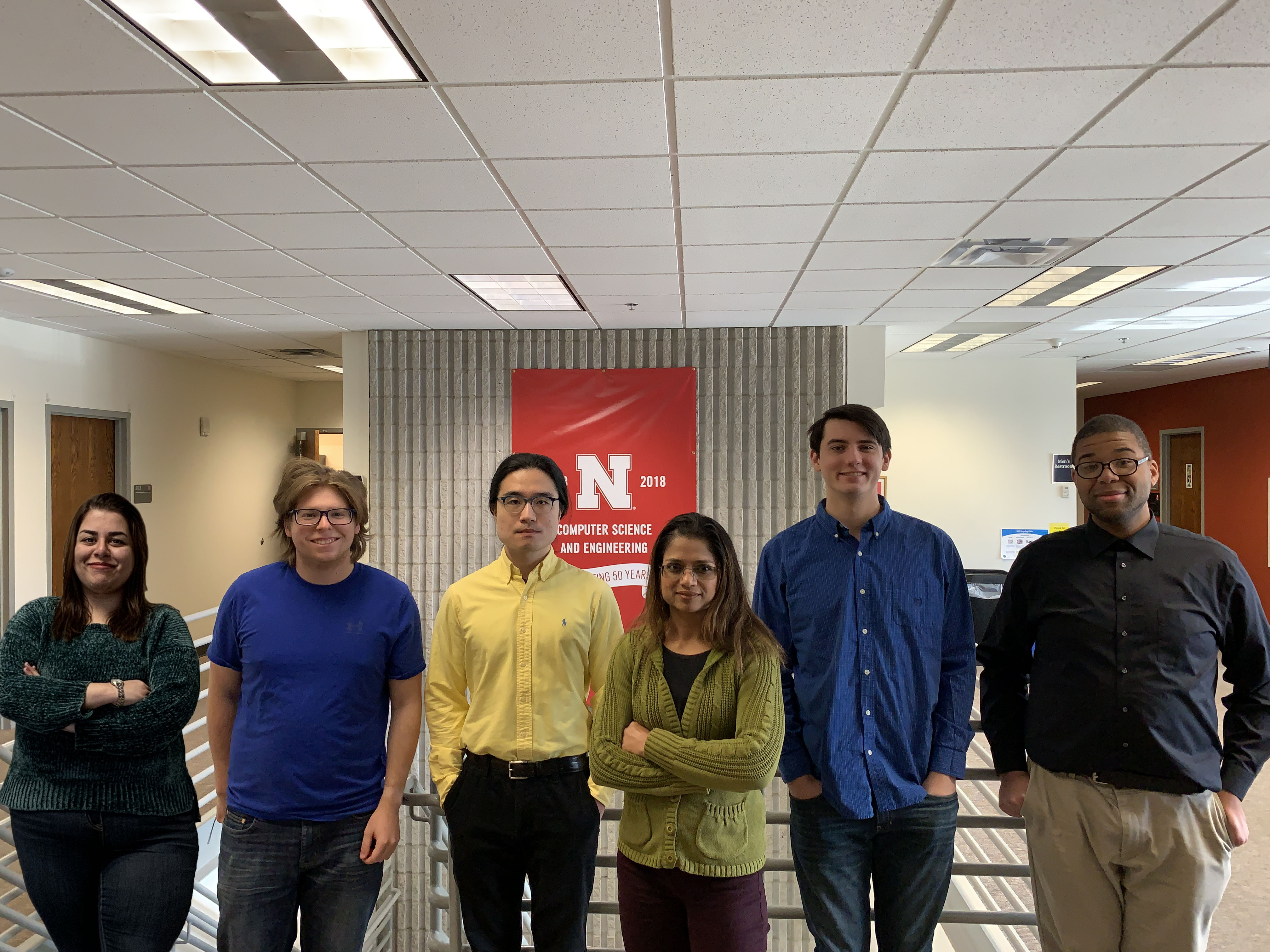Dec 11, 2019
By Victoria Grdina

Computer Science and Engineering assistant professor Bonita Sharif has been conducting several research projects in her Software Engineering Research and Empirical Studies (SERES) Lab over the past year. She and her students have presented papers at multiple conferences and shared their work at various local events.
Here are just a few of the projects and papers Sharif and her students have been collaborating on this year:
“Assessing the Meaning of Emojis for Emotional Awareness — A Pilot Study”
This research project examined interpretation of emoji among varying user demographics. Based on a survey that analyzed 386 responses to nine emoji, results showed that while some emoji were consistently understood by most users, meanings of others varied widely across social groups.
Sharif collaborated on this project with Eindhoven University of Technology professor Alexander Serebrenik and his student, Wesley Brants. The work has been presented at several conferences, including the Emoji2019 Conference. She also presented her work at the Happy Raven’s Nerd Nite event in September.
“A Gaze-Based Exploratory Study on the Information Seeking Behavior of Developers on Stack Overflow”
This eye-tracking study examined how software developers use and navigate Stack Overflow. Given four API elements, the iTrace tools analyzed how developers seek and read the information presented to them. According to the data, developers look at the text more often than the title in posts, code snippets were the second most looked at element, and tags and votes are rarely looked at.
Sharif co-authored the paper with CSE students Cole Peterson and Jonathan Saddler as well as Natalie Halavick of Purdue University. They presented the paper at the 2019 ACM CHI Conference on Human Factors in Computing Systems in Scotland.
The 2019 ETRA Conference
Sharif was a conference chair on the organizing committee of the 2019 ACM Symposium On Eye Tracking Research & Applications held in Denver. She presented her collaborative research with members of Kent State and INRIA Paris, which focused on eye-tracking infrastructure. “Visually Analyzing Eye Movements on Natural Language Texts and Source Code Snippets” was co-authored with Tanja Blascheck of INRIA Paris.
Saddler and Peterson also presented papers at the ETRA Conference. Saddler presented his dissertation, “Looks Can Mean Achieving: Understanding Eye Gaze Patterns of Proficiency in Code Comprehension,” at the doctoral symposium. His dissertation proposes four hypotheses that focus on deriving helpful insights from eye patterns, including concepts concerning programmer expertise, task context and difficulty. Peterson presented two papers: “Factors Influencing Dwell Time During Source Code Reading - A Large-Scale Replication Experiment” and “Using Developer Eye Movements to Externalize the Mental Model Used in Code Summarization Tasks.” Both examined visualization of eye-tracking data from software developers reading and summarizing Java methods.
“Reading Behavior and Comprehension of C++ Source Code - A Classroom Study”
Saddler’s dissertation research was partially based on a classroom study conducted with 17 students. The study analyzed differences in eye gaze and cognition among graduate and undergraduate students when reading C++ programs. Sharif presented this research on Saddler’s behalf at the 2019 Human Computer Interaction International Conference.
The 2019 ICSE Conference and EMIP Workshop
Sharif and her students hosted a special Eye Movements in Programming workshop at the 2019 International Conference on Software Engineering (ICSE) in Montreal. The EMIP community infrastructure meeting included a demo of eye-tracking software iTrace and a presentation of the paper, “Visually Analyzing Students’ Gaze on C++ Code Snippets,” by Cole Peterson.
In collaboration with her Kent State co-author Jonathan I. Maletic, Sharif also presented the paper, “Developer Reading Behavior While Summarizing Java Methods: Size and Context Matters,” which focused on how developers read code during summarization.
“An Empirical Study Assessing Source Code Readability in Comprehension”
John (Jack) Johnson presented this code readability study at the International Conference on Software Maintenance and Evolution (ICSME) in collaboration with co-author Jairo Aponte of Dept. de Ingenieria de Sistemas e Industrial, Universidad Nacional de Colombia.
“Exploring Eye Tracking Data on Source Code via Dual Space Analysis”
This paper was presented by CSE assistant professor Hongfeng Yu at the IEEE Working Conference on Software Visualization (VISSOFT), which is co-located with ICSME. Sharif, Yu, and their graduate students, Peterson, Jianxin Sun, and Li Zhang, co-authored the paper on visualizing eye-tracking data, which is now Zhang’s thesis.
Archie’s Late Night Party at Morrill Hall
Sharif and her students Peterson, Emma Hubka, and Niloofar Mansoor hosted an interactive booth at Archie’s Late Night Party in Morrill Hall. Children and parents in attendance at the family-oriented event learned about eye-tracking by reading bedtime stories.
Collaborations
Sharif is also excited about upcoming collaborations with the university’s Center for Brain, Biology, and Behavior, particularly one that will focus on emotional awareness.
“We have great collaboration going, and I like the fact that I can borrow ideas from psychology, and at the same time they can borrow ideas from software engineering because they use a lot of data science,” Sharif said. “It’s a great win-win situation.”
Sharif also said while she’s very proud and excited about the work she’s accomplished in her first year at Nebraska, she attributes credit to her students’ hard work and support from her fellow faculty.
“The whole point of research is collaboration,” Sharif said. “I couldn’t do this by myself.”